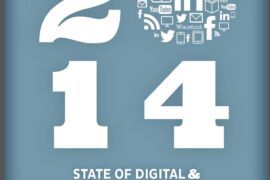 In my last post I offered my ideas on how a law firm might approach a sustainable social media program. I suggested that you not start with the tools, but rather start with the client. Build a strategy around how prospects move through the purchase process and then choose the best tools that will help you help them through the decision making process. In this post I’ll talk about programs and the tools–traditional, digital and social–that I think marketers can use to meet their goals.
In my last post I offered my ideas on how a law firm might approach a sustainable social media program. I suggested that you not start with the tools, but rather start with the client. Build a strategy around how prospects move through the purchase process and then choose the best tools that will help you help them through the decision making process. In this post I’ll talk about programs and the tools–traditional, digital and social–that I think marketers can use to meet their goals.
Programs.
Although the legal industry as a whole has been reticent to embrace the social aspects of the Web due to potential liabilities and ethics concerns, as well as lack of precedent, i.e. “Is anybody seeing any tangible value to this LinkedIn thing?” “Twitter seems like a waste of time. Can you prove it isn’t,” I think it’s time to accept the fact that the social Web is here to stay and get on with it. If you want to get on with it in any meaningful or measurable way, you will want to consider setting up a formal, integrated program.
Here’s a recent podcast interview with Jeremiah Owyang of Forrester Research. He sees many people putting the cart before the horse, or tools before programs; e.g. we want a Twitter strategy, a Facebook strategy, or a blog strategy. [I hear this from law firm marketers, too.] But, to build a sustainable social media program, he suggests using the 80/20 rule. 80% should be about about putting the program in place – strategy, process, roles, measurements, and budget –leaving 20% of the focus for specific technologies or tools.
So, to review, unless you develop code there’s little value in the tools themselves except as a means to an end. The value of the social Web lies in how it allows you to provide your prospects–and clients—a path to your services. Relationships build over time. If your social media approach is built around tools, and executed in a one-off fashion, it is less likely to be measurable and sustainable. No one wants to invest time in something that has little value.
Tools.
Assuming the goal of your overall marketing program is to connect people to your services, there are probably 6 stages that would typically drive your strategies: exposure, knowledge, consideration, selection, purchase/delivery, and satisfaction. (See Part I for break down.)
Now, in each of those stages, what tools—traditional, digital and social—will help you engage with your prospects (or clients)? Here are few off the top of my head.
- Print ads, broadcast, sponsor ads, pay-per-click, Adwords, or contextual ads. (Exposure)
- Inbound marketing and landing pages, white paper downloads. (Exposure, Knowledge)
- E-newsletters, topical articles for online journals, and linking. (Exposure, Knowledge, Satisfaction)
- Online or offline social, political or community involvement and networking. (Exposure, Knowledge, Consideration)
- Speaking engagements—off line and online—Powerpoint, Prezi, YouTube, video, podcast, Webcasts, Webinars. (Exposure, Knowledge)
- Blogs, micro-blogging, professional discussions on media sites or social networks. (Exposure, Knowledge, maybe consideration if the discussion goes off line, Satisfaction)
- Web sites, search optimization. (Exposure)
- Personal interactions such as phone calls, emails, meet-ups, entertainments. (Knowledge, Consideration, Selection, Satisfaction)
- Presentations, or proposals. (Exposure, Knowledge)
- Videos and podcasts THAT ADD VALUE; e.g. that simplify a legal issue or process, not just a talking head on the firm web site talking about their greatness or practice groups. (Exposure, Knowledge, Satisfaction)
- Facebook Fan Page, one THAT ADDS VALUE, not just press releases about me, me, me. (Exposure, Knowledge, Satisfaction)
- Mobilize community members and seek recommendations and referrals–online and offline. (Knowledge, Consideration, Selection.)
- Online or offline focus groups. Lead a Linkedin group or peer to peer network. (Exposure, Knowledge, Consideration, Satisfaction)
- Publicity. Build good will. Earn recognition for excellent work. Get customers talking about you. (Exposure, Knowledge, Consideration, Selection, Purchase, Satisfaction)
- ADD OTHERS HERE….
With this rough sketch, you can quickly see that most social Web tools might fall into the wide end of the funnel-exposure and knowledge. They can also be very useful for many businesses during the satisfaction and service stage. This may take a while for the legal industry to synchronize that aspect, but some forward looking firms are experimenting with white-label, or private networks for clients.
- Remember that success may have to be measured by blades of grass not yardage. Your law firm’s culture will factor in to your ability to move the ball forward.
- Digital and social tools require trial and error–experiment.
- It’s not about the tools; it’s about the experience the tools allow you to create for your prospects, friends of the firm and clients.
- Try to clearly demonstrate the value social tools add to the client experience in order to gain buy in by the firm AND the client!
My questions for you….these are not meant to be rhetorical questions. I’d really like to hear from you. Is your firm building a program (80%) or are you just focusing on the tools (20%)? If so, how is culture factoring into your success? Is your strategy integrated into your global marketing plan or is it just an add on? Are you ready to embrace a culture of conversation and if not, why not?
Related articles by Zemanta
- The Well Lit Path (ducttapemarketing.com)
![Reblog this post [with Zemanta]](http://img.zemanta.com/reblog_e.png?x-id=1a774cfc-478c-49dc-98e5-dc479e881e57)




